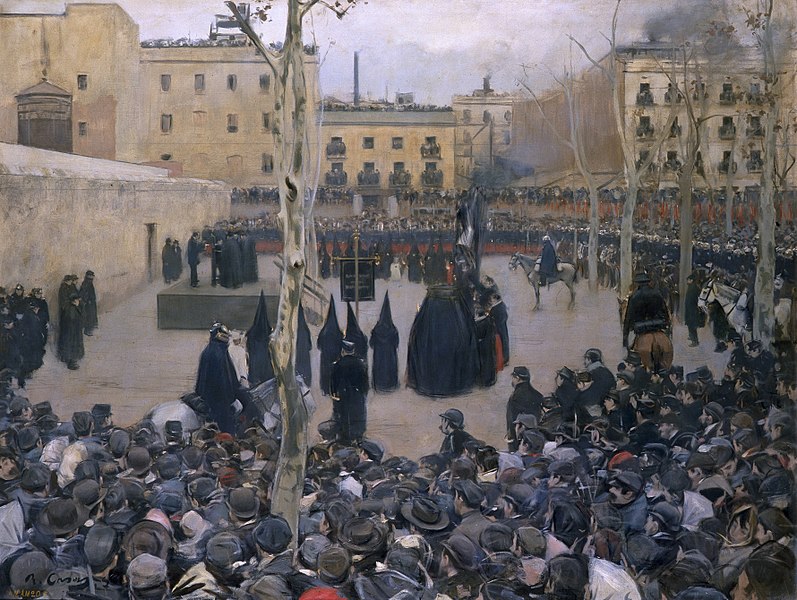Known as the last spiritual refuge of the condemned, the House of Blood was a medieval confraternity that was in charge of accompanying the condemned until their execution.
In Barcelona, the coat of arms still remains on a façade of the Plaça del Pi, reminding us of the function of this place.
It is another of the many corners of Barcelona that have a lot to tell.
The facade is located at Plaza del Pi, number 1. There is only a deteriorated relief on one façade that corresponds to the coat of arms of the Real Archicofradía de la Purísima Sangre de Nuestro Señor Jesucristo (Royal Archconfraternity of the Most Pure Blood of Our Lord Jesus Christ).
It was known as “the House of Blood” and this was its headquarters.
It was a charitable institution founded in the Catalan capital at the beginning of the 15th century.
A renowned medieval confraternity in its time
History tells that around the XV-XVI centuries, the brotherhood was located in the chapel of Peu de la Creu. Later it was attached to the Dominican convent of Los Angeles, MACBA, where it seems to have been in its early years.
In 1547 it was canonically instituted in its own chapel located in the parish basilica of Santa Maria del Pi, right in the building that was built in 1542 and underwent several reforms.
What can be seen today in the Renaissance portal is the coat of arms of the confraternity supported by two angels and a last floor with a gallery of small semicircular arches.
The function of consoling those condemned to die
Basically, when it functioned, its function was to provide spiritual aid to those condemned to death and to console them during their last hours of life.
Its members gathered in the building and organized processions to accompany the prisoners while they were executed.
In this place penitents’ hoods, habits, banners, candles and other liturgical objects were kept.
They had two images of the Holy Christ of two sizes: one small and one large.
If there was an execution of a single prisoner, they took out the small image, but when three were executed, they took out the large one.
The medieval confraternity today
In recent history, it is known that until May 2007 the building housed the Artigues art print shop. What is not known is when it ceased to be a confraternity and became a store.
Apparently in 1920 when it was rented, it was already an art print shop. There are no more Christs, habits or hoods. Today and for several years, the first floor of the building has been occupied by a handcrafted espadrille shop.
In Barcelona there are countless buildings that, although they may only have some symbol of the era, they are reminders of the city’s past.
The symbols and constructions speak for themselves.

